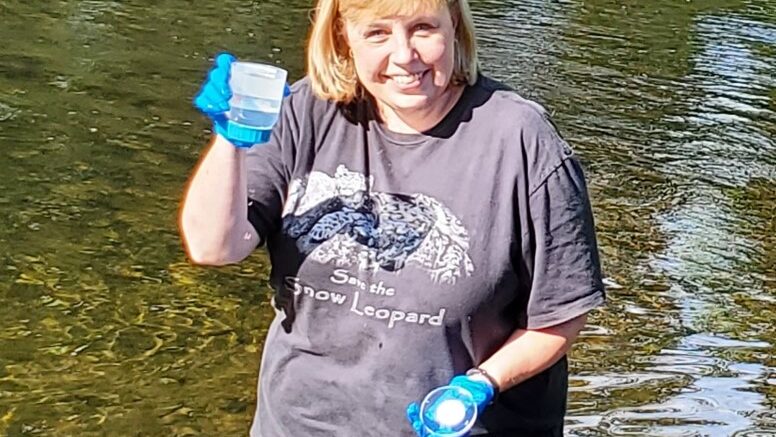A national study, “Unprecedented Analysis Reveals PFAS Contamination in U.S. Waterways Shows Shocking Levels of Contamination” was released on October 18, 2022, by the Waterkeeper Alliance. They are the largest and fastest-growing nonprofit solely focused on clean water, dedicated to preserving and protecting water via local Waterkeeper groups worldwide. The Chautauqua-Conewango Consortium is the Waterkeeper Alliance Affiliate responsible for the Conewango Creek watershed.
The study was based on data gathered in late spring and early summer of 2022, when over 100 Waterkeeper groups collected 228 samples across 34 states plus the District of Columbia. Two of those samples were taken by representatives of the Chautauqua-Conewango Consortium from the Chadakoin River. The results from our samples can be viewed HERE.
All samples, including those from the Chadakoin River, were tested for a group of pollutants known as PFAS(per- and poly-fluoroalkyl substances). These organic chemicals have been used in non-stick pans, water and stain-resistant fabrics, and food packaging since the 1950s and more recently in fire-fighting foam.
The study determined at least one PFAS chemical was detected in 83% of the 114 waterways sampled, stating that “…dangerous PFAS pollution is widespread in surface waters across the country.” The known human health risks from PFAS include increased incidence of cancer, liver and kidney disease, reproductive issues, immunodeficiencies, and hormonal disruptions.
Currently, two PFAS, PFOA and PFOS, have Interim Health Advisory levels set at 0.004 parts per trillion (ppt) and 0.02 respectively. These levels are incredibly low, virtually zero. For comparison, the Chadakoin River has 1.7 ppt PFOA and 1.8 ppt PFOS. The highest levels from this study in New York State were in Cayuga Creek, with 10.3 ppt PFOA and 147 ppt PFOS.
Before this study, the levels of PFAS in US surface waters that serve as drinking water sources, recreational waters, and fisheries were unknown. No federal limits exist for PFAS releases into surface waters under the current Clean Water Act. The EPA is expected to set drinking water standards on two of the PFAS in 2023.
Because the Chadakoin River is a part of the Conewango watershed, the Chautauqua-Conewango Consortium will continue and hopefully expand its monitoring. Plans to work with the national Waterkeeper Alliance on the standards are pending. For more information, read these frequently asked questions about PFAS, and learn how to reduce PFAS in our drinking water.

